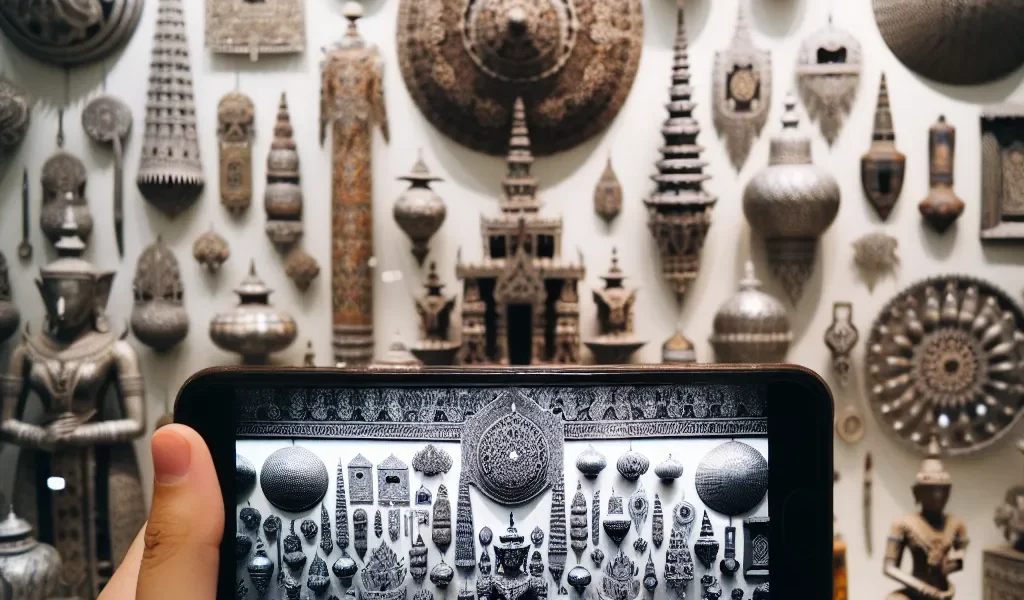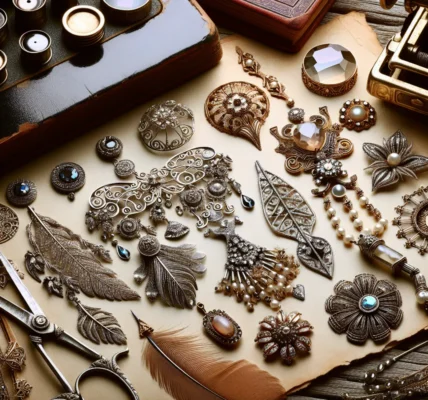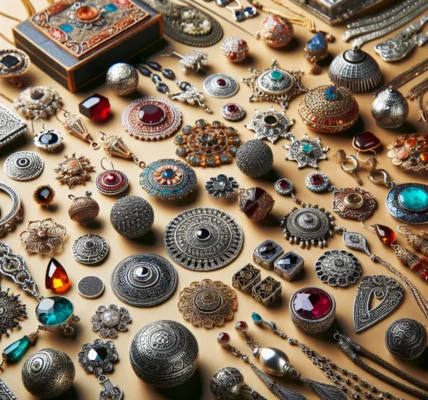The Evolution of Ornamentation through the Ages
Ornaments have been an integral part of human expression and creativity since ancient times, with their evolution reflecting the changes in cultural, social, and artistic values through the ages. The history of ornamentation can be traced back to the earliest human civilizations, where ornaments were used not only for decorative purposes but also as symbols of status, identity, and belief systems.
One of the earliest forms of ornamentation can be seen in the ancient cave paintings dating back tens of thousands of years. These early humans used natural pigments to create intricate designs and patterns on the walls of their dwellings, showcasing a deep-rooted inclination towards ornamentation and aesthetics.
As human societies evolved, so did the art of ornamentation. The ancient Egyptians adorned themselves and their surroundings with ornate jewelry, elaborate headdresses, and intricately carved hieroglyphs, each carrying symbolic meanings and cultural significance. Similarly, the Greeks and Romans utilized ornamentation in their architecture, pottery, and sculptures, often incorporating motifs inspired by nature, mythology, and religious beliefs.
The Middle Ages witnessed a proliferation of ornamentation in the form of illuminated manuscripts, stained glass windows, and ornate metalwork. Ornamental motifs such as the Celtic knots, Gothic tracery, and Islamic arabesques emerged as distinctive styles, each embodying the artistic and cultural influences of the time.
During the Renaissance and Baroque periods, ornamentation reached new heights of opulence and grandeur, adorning palaces, churches, and works of art with intricate designs, gilded embellishments, and luxurious materials. The evolution of ornamentation reflects not only the aesthetic preferences of each era but also the socio-political climate, technological advancements, and cross-cultural interactions.
Today, the tradition of ornamentation continues to thrive, albeit in diverse forms and expressions. From minimalist modern designs to traditional ethnic motifs, ornaments serve as a link to the past while also embodying contemporary sensibilities. The history of ornamentation is a testament to the enduring human impulse to embellish, adorn, and imbue objects and spaces with beauty and meaning.
Cultural Significance of Ornaments in Different Societies
Ornaments have played a significant role in the cultural expression of various societies throughout history. The use of ornaments dates back to ancient civilizations, where they were used to symbolize social status, spiritual beliefs, and cultural identity. In many societies, ornaments were considered to hold immense cultural significance, representing a connection to traditions, values, and beliefs passed down through generations.
In some cultures, ornaments were intricately crafted using materials like gold, silver, and precious gemstones, signifying wealth and prosperity. They were worn during important ceremonies, including weddings, religious rituals, and festivals, and were often passed down as heirlooms. The intricate designs and patterns of these ornaments often held symbolic meanings, representing aspects of nature, deities, or important life events.
Furthermore, ornaments were also used as a form of communication in some societies, conveying specific messages about the wearer’s social status, community affiliation, or marital status. For example, certain ornaments in traditional African societies were worn as symbols of tribal allegiance and marital status, allowing individuals to communicate their background and standing within the community.
Moreover, ornaments have been a means of preserving cultural identity and heritage. In indigenous societies around the world, ornaments were and continue to be crafted using traditional techniques and materials, reflecting the deep-rooted connection to their cultural heritage. The designs of these ornaments often incorporate elements of indigenous art, stories, and spiritual beliefs, serving as a visual representation of the community’s cultural narratives.
As societies have evolved, the significance of ornaments has persisted, with contemporary interpretations aligning with the values and customs of modern culture. While the materials and styles may have evolved, the cultural importance of ornaments remains a vital aspect of many societies, serving as a means of expressing and preserving cultural identity.
The Artistry and Craftsmanship Behind Ornament Design
When exploring the history and meaning of ornaments, it is impossible not to marvel at the artistry and craftsmanship behind their design. Ornament design has a rich history rooted in various cultural and artistic traditions, each reflecting the unique sensibilities and skills of the artisans who created them. From intricate metalwork to delicate embroidery, ornaments have been crafted using a wide array of materials and techniques, showcasing the ingenuity and creativity of their makers.
The art of ornament design is a testament to the skill and dedication of artisans throughout history. Whether it is the ornate patterns adorning ancient architecture or the exquisite details of handmade jewelry, the craftsmanship behind ornament design has always been a reflection of the values and beliefs of the societies in which they were created. Each ornament tells a story, preserving the artistry of its maker and the cultural heritage from which it emerged. The intricate designs and meticulous craftsmanship demonstrate the passion and expertise that went into creating these timeless works of art.
Throughout history, ornament design has evolved in response to changes in artistic movements, technological advancements, and cultural influences. From the elaborate ornamentation of the Rococo period to the streamlined designs of the Art Deco era, each style reflects the prevailing aesthetic principles of its time. Yet, amidst these changes, the commitment to fine craftsmanship has remained a constant, ensuring that ornaments continue to captivate and inspire with their beauty and artistry.
As we delve into the history and meaning of ornaments, it is essential to recognize the tremendous skill and creativity embedded in their design. The artistry and craftsmanship behind each ornament serve as a testament to the enduring power of human creativity and the invaluable legacy of artistic traditions passed down through generations.
Exploring the Symbolism and Religious Connotations of Ornaments
Exploring the Symbolism and Religious Connotations of Ornaments
Ornaments have been a significant part of human history, used for various purposes such as decoration, cultural representation, and religious symbolism. In many cultures, ornaments hold deep religious connotations and are often linked to spiritual beliefs and practices. From the ancient Egyptian use of amulets to the Christian tradition of decorating Christmas trees, ornaments have played a crucial role in expressing and honoring religious beliefs.
In Christianity, ornaments are often used to adorn places of worship such as churches and cathedrals. These ornaments, such as crosses, icons, and religious symbols, serve as visual representations of faith and spirituality. They are not merely decorative items but hold profound religious significance for the worshippers.
Moreover, ornaments are frequently used in religious ceremonies and rituals. For example, in Hinduism, ornamental designs known as “rangoli” are created using materials like colored rice, dry flour, and flower petals in homes and temples to welcome divine beings and bring good luck. Similarly, in Buddhism, intricate ornaments and decorations are used in religious festivals and ceremonies to create a sense of reverence and devotion.
Furthermore, ornaments often carry specific symbolic meanings in various religious contexts. For instance, the use of bells in Tibetan Buddhism symbolizes wisdom and the sound of the Dharma, while in Islam, geometric ornaments are used in architecture and art to symbolize the infinite nature of Allah.
In conclusion, exploring the symbolism and religious connotations of ornaments reveals the profound interconnection between art, culture, and spirituality. These intricate and meaningful designs not only adorn our surroundings but also serve as a powerful expression of religious beliefs and traditions throughout history.
Overall, ornaments remain an essential aspect of religious expression and continue to enrich our understanding of diverse spiritual perspectives.




